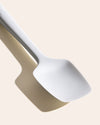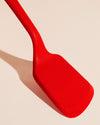
-
Prep Time
10 Minutes
-
Cook Time
0 Minutes
-
Total Time
10 Minutes
-
Yield
Apx. 1 1/3 cups; Serving Size: 2 Tablespoons
When it comes to enhancing the flavor of seafood dishes, tartar sauce stands out as a classic and beloved condiment. Whether you're enjoying crispy fish sticks, succulent crab cakes, or perfectly fried fish, tartar sauce adds a tangy and creamy touch that elevates the overall experience. Let’s explore the secrets of creating an easy and tasty homemade tartar sauce.
While store-bought options are readily available, making your own tartar sauce ensures freshness, quality ingredients, and the opportunity to customize the flavors to suit your taste. You can prepare a delicious accompaniment that complements a wide range of seafood delicacies with a few simple steps.
In addition to sharing a homemade tartar sauce recipe, we'll dive deeper into the fascinating history of tartar sauce and its global variations. From its origins to its evolution across different regions, we'll discuss the unique influences shaping this popular condiment.
How Did Tartar Sauce Come to Be?
Tartar sauce's origins can be traced back to the coastal regions of Europe, where it was first concocted as a delicate accompaniment to seafood dishes.
It gained popularity thanks to its distinct briny and tangy taste that beautifully enhanced the flavors of freshly caught fish. Over time, tartar sauce underwent transformations as it traveled across continents.
Different regions have put their own unique twists on tartar sauce, incorporating local ingredients and preferences. In France, for instance, the sauce is known as "sauce tartare" and is typically made with mayonnaise, capers, finely chopped dill pickles, and sometimes additional flavorings like shallots or sour cream. French tartar sauce tends to have a more delicate and nuanced flavor profile.
On the other hand, the American version of tartar sauce often includes ingredients like dill pickles, lemon juice, mayonnaise, and sometimes sweet pickle relish for added tanginess. In some regions of Greece, tartar sauce includes the rich creaminess of Greek yogurt and a touch of garlic.
While regional variations exist, the core components of tartar sauce often remain consistent: Mayonnaise, dill pickles (either chopped or as relish), capers, lemon juice, and fresh dill. These ingredients combine to provide a balance of creaminess, tanginess, and brininess, making tartar sauce a versatile and delightful condiment.
Considerations for Making Tartar Sauce
When preparing tartar sauce at home, a few key considerations will help you achieve an ideal balance of flavors. The quality and freshness of the ingredients you use play a significant role in the final result.
Opting for homemade mayonnaise, for example, ensures a creamier and more flavorful base. However, if store-bought mayo is more convenient, choose a high-quality brand without excessive additives.
Dill pickles are another important ingredient in tartar sauce, offering a signature tanginess. Whether you prefer chopped dill pickles or dill relish is a matter of personal taste. Some enjoy chopped pickles' crunchier texture, while others appreciate the smoother consistency of relish. Experiment with both options and determine which suits your preference.
In addition to dill pickles, capers contribute a briny and slightly salty taste to tartar sauce. These small flower buds can elevate the flavor profile and provide a touch of sophistication. However, it's important not to overpower the sauce with capers, so use them sparingly.
Other essential components include Dijon mustard and fresh lemon juice, which add tanginess and acidity. Opting for fresh lemon juice ensures vibrant citrus flavors. Additionally, fresh dill or dried dill can be used to introduce herbal notes, depending on availability and preference.
Homemade Tartar Sauce Recipe
Prep Time: 10 minutes
Total Time: 10 minutes
Yield: Apx. 1 1/3 cups; Serving Size: 2 Tablespoons
Our easy homemade tartar sauce recipe will elevate your seafood dishes to new heights. You can whip up a batch of this delectable condiment with just a few simple ingredients in no time.
Ingredients:
- 1 cup mayonnaise (homemade for the best flavor)
- 2 tablespoons chopped dill pickles or dill relish
- 1 tablespoon capers
- 1 teaspoon Dijon mustard
- 1 tablespoon fresh lemon juice
- 1 tablespoon fresh dill (or 1 teaspoon of dried dill)
- Optional additions: sweet pickle relish, Worcestershire sauce, hot sauce, shallot, tarragon, black pepper, or horseradish, based on personal preference
Tools We Used:
GIR Spatula: Easy-to-clean one-piece design that’s heat resistant up to 550°F. Available in several fun colors.
Instructions:
- Combine the mayonnaise, chopped dill pickles or dill relish, capers, Dijon mustard, fresh lemon juice, and fresh dill in a small bowl.
- Stir the ingredients thoroughly until well combined.
- Taste the tartar sauce and adjust the flavors to suit your preference. If you prefer additional tanginess, add a teaspoon of sweet pickle relish. Add a dash of Worcestershire sauce or hot sauce for a bolder flavor. Shallots, tarragon, or horseradish can also be incorporated for extra depth.
- Once you're satisfied with the flavors, transfer the tartar sauce to an airtight container.
- Refrigerate the sauce for at least 30 minutes before using, allowing the flavors to meld and develop.
With this simple recipe, you can enjoy the best tartar sauce you've ever tasted in the comfort of your own kitchen. The homemade version lets you control the ingredients and ensures the utmost freshness and quality.
What Other Foods Can I Put Tartar Sauce On?
Tartar sauce's versatility extends beyond seafood dishes, making it a delightful addition to a wide range of culinary creations. While it enhances the flavors of fish sticks, crab cakes, and fried fish, there are other imaginative ways to enjoy this tangy condiment.
Consider using tartar sauce as a delightful accompaniment for fish sandwiches. Slather it generously on a soft bun, add a crispy fish filet, and top with lettuce and tomato for a satisfying meal. The creamy tang of the tartar sauce perfectly balances the textures and flavors of the sandwich.
Additionally, tartar sauce is a perfect dipping sauce for French fries. The combination of the crispy fries with the creamy and briny tartar sauce creates an irresistible snack or side dish.
For those looking to explore new recipes, tartar sauce can also be used as a base for a seafood-inspired salad dressing or as a tangy spread on wraps and sandwiches.
Its refreshing tang and creamy texture make tartar sauce a versatile choice that can be enjoyed in various ways, limited only by your imagination. So, get creative and experiment with different dishes, knowing that tartar sauce will add a burst of flavor and elevate your dishes.
Health Benefits & Nutritional Information
Apart from its delicious taste, homemade tartar sauce offers several health benefits. By creating your own, you have control over the ingredients' quality and can make healthier choices based on your dietary preferences.
Tartar sauce typically contains mayonnaise, which provides essential fats. However, by opting for homemade mayo or using healthier brands, you can regulate the types of fats consumed, favoring polyunsaturated and monounsaturated fats over trans fats.
Additionally, tartar sauce includes ingredients like dill pickles, capers, and lemon juice, which contribute to its nutritional value. Dill pickles contain a modest amount of vitamin A, calcium, and potassium. Packed with briny flavor, capers offer a good source of vitamin K, a nutrient important for blood clotting.
Considering portion sizes, one serving of tartar sauce (approximately 2 tablespoons) contains around 120 kcal, primarily from the mayonnaise. The exact nutritional content may vary based on the specific ingredients used and any optional additions.
While tartar sauce should be enjoyed in moderation due to its calorie content, it can contribute to a balanced diet when paired with nutrient-rich seafood dishes.
The Takeaway
Homemade tartar sauce is easy to make, incredibly tasty, and versatile.
The beauty of tartar sauce lies in its ability to enhance the flavors of fish sticks, crab cakes, and fried fish while also being a delightful addition to fish sandwiches, French fries, and more. Its tangy creaminess brings a burst of flavor to various dishes, showcasing its versatility in the culinary world.
So, why settle for store-bought options when you can enjoy the freshness and quality of homemade tartar sauce? Take the plunge and experiment with different flavor combinations, adjusting the ingredients according to your preferences.
Visit our blog for additional recipes, tips, and inspiration to elevate your culinary adventures.
Sources:
Tartar Sauce: The Beef Tartare Condiment | Spice Ography
Fail-Proof Homemade Mayonnaise | Inspired Taste
Tartar Sauce Nutrition Facts and Health Benefits | Very Well Fit
Did you make this recipe?
Tag @gir on Instagram and hashtag it #CookHappy for a chance to be re-posted!


















